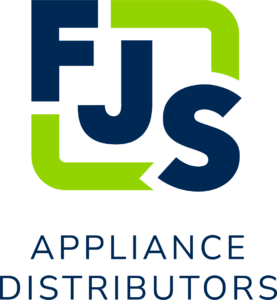Posted by FJS Distributors, Inc.
Clogged Dryer Vents and Other Headaches You’ll Avoid with Ventless Dryers
With the ever-increasing demand for in-unit laundry, many property owners are evaluating their options. Does it make sense to invest in new laundry appliances? Will my return on investment (ROI) remain strong even with installation and maintenance costs? Does in-unit laundry translate to improved renter satisfaction and renewals?
With ventless dryers, the answers are YES, YES and YES.
A Brief History of Ventless Laundry
Ventless dryers have been popular around the world for decades. Many European and Asian countries have reaped the benefits of ventless dryers since they first hit the market in the 1980s. But, adoption rates have been slower in the United States. Do you know why?
When ventless dryers and the washer/dryer combo first started being used in the United States, they weren’t sold with any education. That meant that many users didn’t understand that these appliances worked a little differently than traditional vented dryers but had many benefits that users and property owners would find valuable.
Load size has a significant impact on the final result. The air-to-air or cold-water condensation process requires that clothes have space to tumble as they dry, so smaller loads dry beautifully while larger loads might not turn out as well.
With that misconception cleared up, ventless dryers are easy to operate, easy to install and easy to maintain.
AND ventless dryers avoid some key challenges that come with traditional ventless dryers.
Here are five headaches you’ll avoid by installing ventless dryers in your property.
- Installation
The cost of retrofitting an existing property to add vent runs can be astronomical. It can often involve redesigning floorplans, moving walls or windows and finding space to fit an appliance with access to both water and vents. Then comes the challenge of adding vents to exhaust hot air from the dryer to a safe place outside. If a property wasn’t designed to incorporate these vents, finding space can be both challenging and costly. Ventless dryers – as their name suggests – eliminate this challenge completely. No vents? No problem. - Space Challenges
In addition to finding a space with adequate water, electrical and vent hookups, vented dryers and traditional washing machines often need a significant amount of floor space. Ventless dryers, on the other hand, can be installed just about anywhere. Their compact footprint and simple requirements mean if there’s an outlet available, a dryer can be installed. That means inside closets, under countertops or in smaller nooks are all fair game. Adding ventless dryers increases usable space while making residents’ lives easier. That’s a win for everyone. - Cleaning
Dryers dry already clean clothes, so they should stay clean, right? If only that were the case. The lint trap should serve as a reminder that dryers get dirty, too. Lint, dust and debris can build up in dryer vents or get into the machine’s nooks and crannies, causing the machine to use more energy while demonstrating poorer performance. Traditional vented dryers should be deep-cleaned four times per year. While a ventless dryer should also be kept clean, there’s no need to spend hours vacuuming out a vent because… there’s no vent! - Clogged Dryer Vents
Cleaning a dryer vent four times a year is unrealistic for most people. Cleaning a dryer vent once every four years is more likely, but chances are a vent only gets cleaned once a clog becomes apparent. To remove the clog, the vent must be disconnected from the dryer, emptied, vacuumed and reinstalled. Depending on the clog, this process could take 30 minutes to several hours.
Once again, no vents mean no problems. Clogged dryer vents simply do not exist with ventless dryers. - Fire Hazards
Clogged dryer vents, excess lint or dust buildup and an overworked heating element are a recipe for dryer fires. Long vent runs can increase the risk. When vents have to twist and turn to accommodate a building’s structure, the more opportunity there is for lint, dust or debris to collect. What’s more, residuals can build up just about anywhere in machines that are not cleaned regularly. This puts the entire property at risk of fire.
The risks that go along with traditional vented dryers can be significant, making ventless dryers an even smarter laundry solution for multi-family properties. With an easier installation and less ongoing upkeep, ventless dryers are a solid investment with a fast payoff.
How Do Ventless Dryers Work?
Now that we’ve piqued your interest about ventless dryers, we’d like to share a little more about how they work. There are two common types of ventless dryers – both of which work are proven to succeed in multi-family property applications.
Please fill out the form below to download our free Ventless Dryer Guide for a closer look at the ventless drying process. We’re confident that you’ll see the benefits right away.
